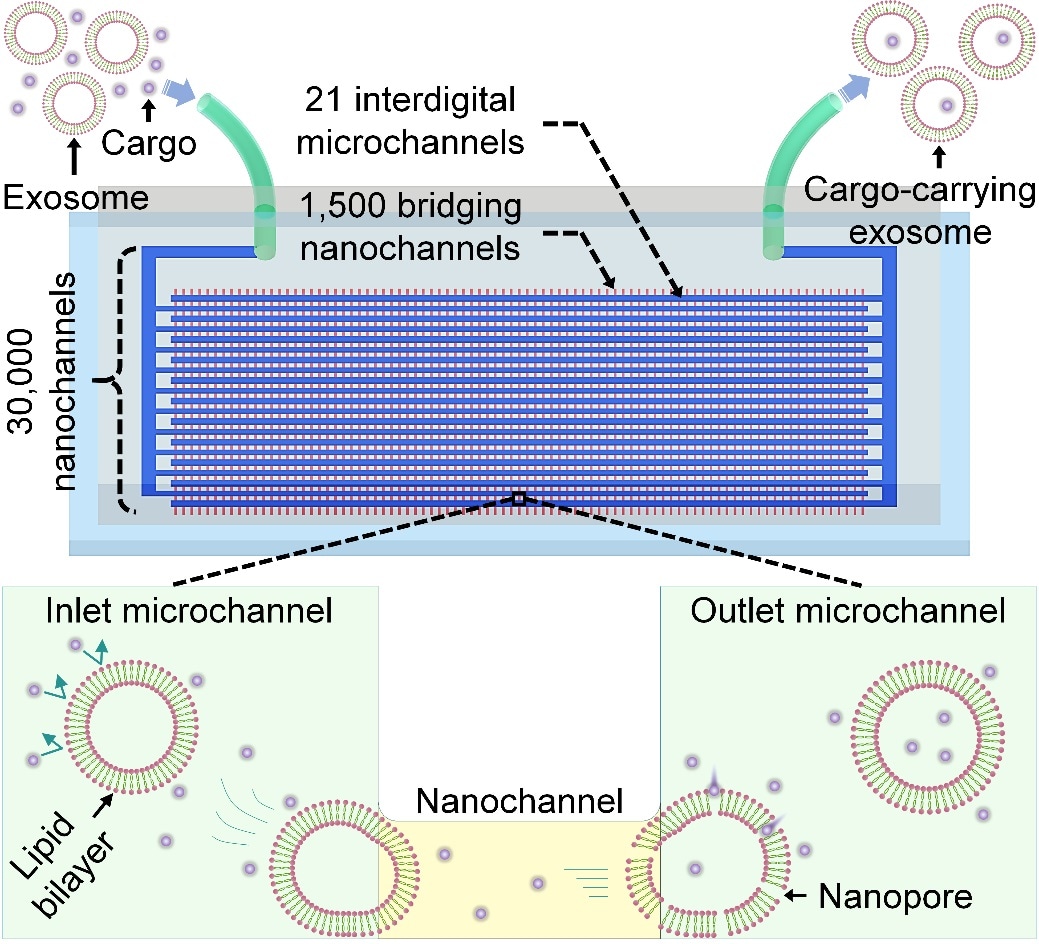A team of researchers headed by Professor Hui Yang from the Shenzhen Institute of Advanced Technology (SIAT) of the Chinese Academy of Sciences described an innovative nanofluidic device for high-throughput preparation of exosome-based drug delivery vehicles.

Schematic illustration of the ENP to prepare cargo-carrying exosomes. Image Credit: Small website.
The research was published in the journal Small.
Exosomes, biological nanoparticles, are secreted into extracellular space or body fluid by mostly all types of cells, with a diameter of around 30 ∼ 200 nm. As exosomes have a naturally derived composition and function like intercellular communication tools, they harbor huge potential as smart vehicles for cargo delivery.
But the widely employed processes to create exosomes that carry preferred cargos experience lower loading efficiency and higher damages on both exosomes and their cargos.
In the current research, Professor Yang’s team put forth a high-throughput nanofluidic device called “exosome nanoporator (ENP),” which could load different exogenous cargos into exosomes.
The ENP can precisely control the features of fluid in nanoscale by nanofluidic technology, to achieve greatly controllable preparation conditions of exosome-based drug delivery vehicles.
Furthermore, nanofluidic channels with accurate geometries were synthesized, thus achieving 30,000 modules working in parallel in a sole device.
Transportation of exosomes via the nanochannels makes exosome membranes permeabilized by mechanical compression and fluid shear. This creates transient nanopores on the exosome membranes and permits the influx of cargo molecules into exosomes from the solution around along with maintaining exosome integrity.
The scientists chose doxorubicin hydrochloride, a clinically approved chemotherapeutic antitumor drug, as the cargo model and found that the ENP can effectively load it into exosomes.
We find that the exosomes treated by the ENP can deliver their drug cargos to human non-small cell lung cancer cells and induce cell death. This indicates potential opportunities for the device for developing new exosome-based delivery vehicles for medical and biological applications.”
Hui Yang, Professor, Shenzhen Institute of Advanced Technology, Chinese Academy of Sciences
This novel strategy is anticipated to evolve into a platform to load various exogenous substances with biological importance and clinical therapeutic effects into exosomes.
Novel nanofluidic device for efficient exosome-based drug delivery. Video Credit: Professor Hui Yang’s group.
Source:
Journal reference:
Hao, R., et al. (2021) A High-Throughput Nanofluidic Device for Exosome Nanoporation to Develop Cargo Delivery Vehicles. Small. doi.org/10.1002/smll.202102150.